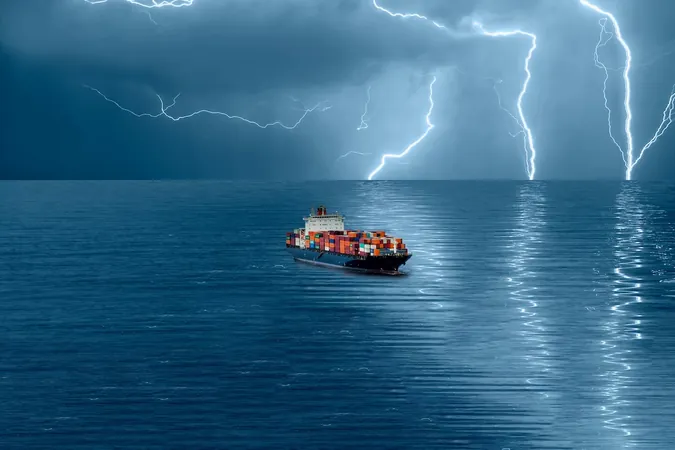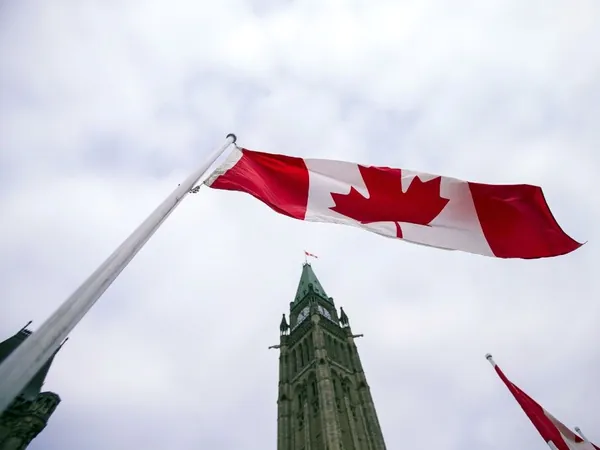
Canada on the Edge: How Trump's Policies Could Redefine Its Future
2025-04-05
Author: William
Canada, once securely nestled between the influential powers of the British Empire and the United States, now finds itself at a tumultuous crossroads. Historically, this vast nation has thrived within the protective embrace of its neighbors, but recent developments pose an unprecedented threat to its identity and stability. With Donald Trump's return to power, a wave of political upheaval is sweeping across the continent, reshaping trade, economy, and national security in profound and concerning ways.
Historian Margaret MacMillan captures the shock many Canadians feel: “We’re suddenly finding ourselves on our own. This is a shock,” she states, emphasizing that Canada has reached a point of self-reliance that’s unprecedented in its modern history. The shifts in U.S. policy under Trump's administration have brought uncertainty, as trade relationships fray, security assurances waver, and the sovereignty of this almost 160-year-old nation comes under scrutiny.
The implications of Trump's agenda are far-reaching. For decades, cross-border trade with the U.S. has been seamless, almost a given, with Canadians leveraging their proximity for economic prosperity. Yet in just a short time since his reelection, Trump has initiated tariffs that threaten to create a chasm of division between the U.S. and Canada. Goods that previously flowed freely are now subject to scrutiny, with potential duties complicating the landscape for Canadian manufacturers.
"In this new climate, the dynamics of our economic relationship are being rewritten," explains Perrin Beatty, former cabinet minister and business leader. He posits that Canadians may look back at Trump's presidency as a transformative moment, where the country finally grasped the reins of its destiny.
Trade statistics underscore Canada's vulnerability: last year, 77% of its exports were directed to the U.S., making the nation overly reliant on its southern neighbor. As Trump raises tariffs, Canadian businesses face a dual challenge: retaliatory measures and the constraints of an economy heavily linked to U.S. consumer demand.
But amidst these challenges lies an opportunity for Canada to evolve. Experts suggest that this moment could force Canada to innovate and diversify its trade practices, seeking new partnerships not only with countries like those in the European Union and Asia, but also strengthening interprovincial trade. As Chris Alexander, a former diplomat, notes, “Infrastructure is key. We need to build new corridors for trade and become a strategic supplier to global markets.”
The need for pipeline projects and new energy sources is highlighted as Canada grapples with developing its resources. Energy independence could be a game changer, signaling to both U.S. and international markets that Canada is not a mere extension of American economy but a self-sustaining powerhouse ready to step into its role.
Moreover, as seen with the success of Nova Scotia in increasing sales to China, there is a clear blueprint for diversifying trade. However, this strategy is not without its quandaries, especially when engaging with countries whose human rights records raise eyebrows.
Yet, as pressures mount from domestic challenges and external tariffs, the real question becomes whether Canada can unite in a concerted effort to confront these economic realities head-on. “National unity and commitment over the long haul will be crucial,” warns Michael Ignatieff, a noted political scholar. “We can indeed find new markets, but it requires time, effort, and a collective vision.”
As Canada stands on this precarious precipice, the future remains uncertain but filled with potential. The country’s response to these challenges could redefine its trajectory, shifting from a historically reactive state to one that proactively shapes its own economic destiny. The task at hand is formidable, but for Canadians, the time has come to decide: will they move forward together to meet these new challenges, or risk being left behind?









 Brasil (PT)
Brasil (PT)
 Canada (EN)
Canada (EN)
 Chile (ES)
Chile (ES)
 Česko (CS)
Česko (CS)
 대한민국 (KO)
대한민국 (KO)
 España (ES)
España (ES)
 France (FR)
France (FR)
 Hong Kong (EN)
Hong Kong (EN)
 Italia (IT)
Italia (IT)
 日本 (JA)
日本 (JA)
 Magyarország (HU)
Magyarország (HU)
 Norge (NO)
Norge (NO)
 Polska (PL)
Polska (PL)
 Schweiz (DE)
Schweiz (DE)
 Singapore (EN)
Singapore (EN)
 Sverige (SV)
Sverige (SV)
 Suomi (FI)
Suomi (FI)
 Türkiye (TR)
Türkiye (TR)
 الإمارات العربية المتحدة (AR)
الإمارات العربية المتحدة (AR)